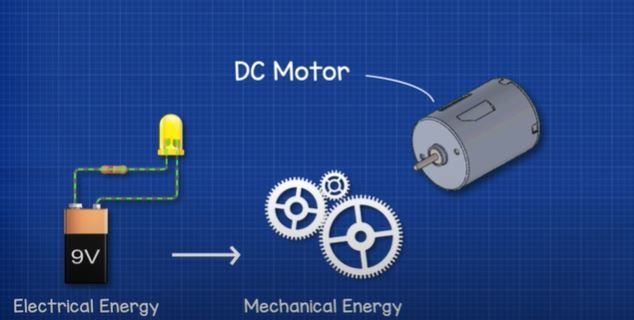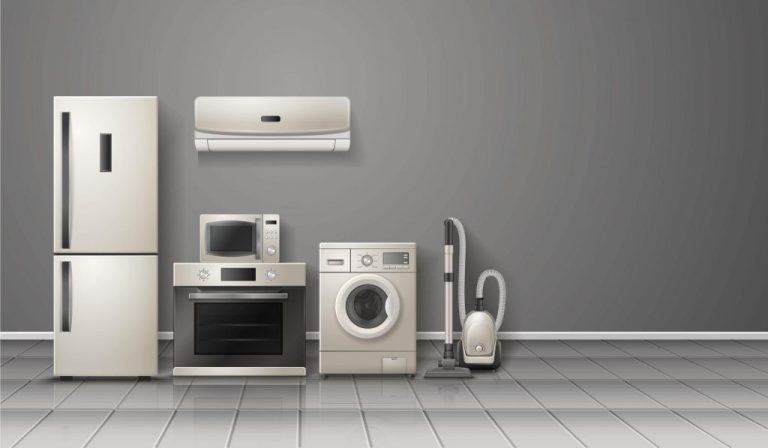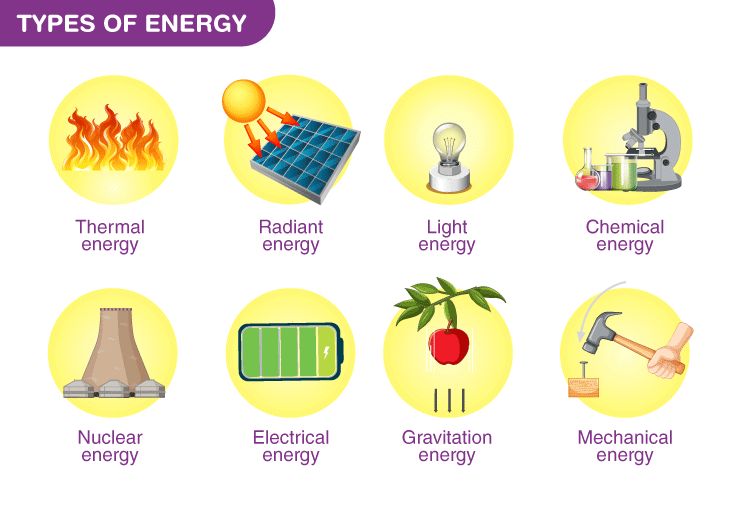What Can Energy Be Defined As?
Energy can be simply defined as the ability to do work or cause change. Energy makes things happen and keeps things moving. Without energy, nothing could function, move, or occur in the universe.
Energy is vital to all life on earth and central to human civilization. We use energy to produce goods and provide services that improve our quality of life. Access to affordable and reliable energy enables economic growth, job creation, and higher living standards.
In this article, we will look at different forms of energy, units used to quantify energy, the law of conservation of energy, energy transfers and transformations, energy sources, energy consumption, and ways to improve energy efficiency.
Forms of Energy
Energy exists in many different forms. The two main categories are potential energy and kinetic energy.
Potential energy is stored energy due to position or composition. For example, a ball held at a height above the ground has gravitational potential energy due to its position. Chemical potential energy is energy stored in the bonds of atoms and molecules. Other examples include nuclear potential energy and elastic potential energy.
Kinetic energy is energy of motion. Examples include the motion of waves, electrons, atoms, molecules, substances, and objects. The faster an object moves, the more kinetic energy it possesses.
Other common forms of energy include:
- Mechanical – energy stored in objects by tension or motion
- Thermal – internal energy of substances
- Chemical – energy stored in chemical bonds
- Nuclear – energy stored in the nucleus of an atom
- Electrical – energy from electric charges or fields
- Radiant – energy transported by electromagnetic radiation
Energy Units
Energy can be measured in several different units:
Joules – The joule is the International System of Units (SI) unit for energy. It is defined as the energy required to accelerate 1 kg of mass by 1 m/s2 through a distance of 1 m. Joules are commonly used to measure electrical, mechanical, chemical, nuclear, and thermal energy.
Calories – The calorie was originally defined as the amount of heat required to raise 1 gram of water by 1°C. There are several definitions for the calorie that are used in different contexts including the small calorie (cal), large calorie (Cal), and kilocalorie (kcal). Calories are often used to measure energy in food.
Kilowatt-hours – The kilowatt-hour is a unit of energy equal to 3.6 million joules. It is the amount of energy that can provide power of 1 kilowatt for 1 hour. Kilowatt-hours are commonly used to measure electrical energy consumption.
British Thermal Units (BTUs) – The BTU is a traditional unit of heat defined as the amount of heat required to raise the temperature of 1 pound of water by 1°F. BTUs are often used to measure heat output from furnaces, boilers, and air conditioners.
Law of Conservation of Energy
The law of conservation of energy states that energy can neither be created nor destroyed, only transformed from one form to another. This is also known as the first law of thermodynamics.
For example, when a match is struck the chemical energy in the matchhead is transformed into heat and light energy. The total energy in the system remains constant, even though the forms of energy change. Another example is a swinging pendulum. As the pendulum swings upwards, it has gravitational potential energy. At the top of its swing, this is transformed into kinetic energy as it moves downwards. When it reaches the bottom, the kinetic energy is transformed back into gravitational potential energy. The energy transitions between different forms but the total amount of energy remains the same.
This law is extremely important in physics and engineering. It allows us to quantify the total amount of energy in a closed system and know that this amount cannot change, regardless of how energy transitions between different objects or forms. The only way to increase or decrease the total energy in a system is to add or remove energy from outside the system.
The law of conservation of energy shows that energy is a fundamental property of the universe that can be quantitatively described. It provides a powerful tool for analyzing physical processes involving energy transformations and flow. Practical applications range from electrical engineering to biochemistry. Overall, this law is one of the most far-reaching principles in science.
Transfer of Energy
Energy can be transferred between objects through four main mechanisms: heat, work, waves, and matter transfer. Heat transfer occurs when two objects at different temperatures come into contact, causing energy to flow from the hotter to the cooler object until they reach the same temperature. Work (or mechanical energy) transfer happens when a force moves an object over a distance, like a person lifting a box. Wave energy transfer involves electromagnetic waves, like light, radio waves, or microwaves, carrying energy from one place to another. Matter transfer is the movement of actual matter that contains energy, such as burning fuel in an engine.
Energy transfers lead to energy transformations, where the energy changes from one form to another. For example, chemical energy in gasoline is transferred as heat to the engine, where it is transformed into kinetic energy that propels the vehicle. The mechanisms of energy transfer work together to move energy throughout the universe and support essentially all physical, chemical, geological, and biological processes.
Energy Transformations
Energy can change from one form to another through various processes. Here are some common examples of energy transformations:
Chemical to Electrical Energy
Batteries convert the chemical energy stored in their materials into electrical energy through redox reactions. The chemical reactions release electrons which can then flow as an electric current.
Chemical to Mechanical Energy
During cellular respiration, cells break down glucose and convert its chemical energy into kinetic energy as ATP molecules. This fuels mechanical processes like muscle movement.
Electrical to Light Energy
Light bulbs transform electrical energy into visible light and heat energy. As current passes through the filament, it heats up and emits photons.
Mechanical to Electrical Energy
Generators convert mechanical energy into electrical energy through electromagnetic induction. When magnets spin around coils of wire, they induce a voltage difference that generates electricity.
Nuclear to Thermal Energy
In nuclear power plants, nuclear fission of uranium atoms releases energy as heat. This thermal energy is used to boil water into steam that drives turbines to generate electricity.
Energy Sources
Energy comes from various sources, which can be categorized as renewable and nonrenewable. Renewable energy comes from naturally replenishing sources, while nonrenewable energy comes from finite resources that will eventually run out.
Some of the main renewable energy sources are:
- Solar energy from the sun
- Wind energy
- Hydropower from flowing water
- Geothermal energy from heat inside the earth
- Biomass from plants and organic waste
The primary nonrenewable energy sources are fossil fuels, including:
- Oil
- Natural gas
- Coal
Nuclear power from uranium is also considered nonrenewable. Fossil fuels formed over millions of years and exist in finite quantities. Renewables can be replenished over relatively short periods of time.
There are pros and cons to each energy source in terms of availability, cost, environmental impact and more. An ideal energy mix incorporates diverse sources to meet demand in a sustainable manner. The optimal sources depend on the region and its natural resource endowments.
Energy Consumption
World energy consumption has increased rapidly over the past century. According to the U.S. Energy Information Administration (EIA), total world energy consumption was about 63,000 TWh in 1980. By 2020, it had grown to over 159,000 TWh, more than doubling over the 40 year period.
Fossil fuels like oil, natural gas, and coal still account for the majority of global energy consumption, although their share has decreased slightly in recent decades. In 2020, oil made up 31% of total energy consumption worldwide, natural gas 24%, and coal 27%. The remaining 18% came from nuclear and renewable sources like hydro, wind, solar, and biofuels.
Energy demand is expected to continue growing, especially in developing regions like Asia, Africa, and South America. The EIA projects world energy consumption will increase nearly 50% by 2050, led by growth in non-OECD countries. Population growth, rising incomes, urbanization, and industrialization are key factors driving this trend.
However, there are some signs that energy demand may plateau in developed countries as efficiencies improve. For example, OECD energy use has remained relatively flat over the past decade. Going forward, increasing energy efficiency and transitions to renewable energy sources will be crucial to meet rising global energy needs in a sustainable manner.
Energy Efficiency
Energy efficiency is an important aspect of energy management and sustainability. It refers to using less energy to provide the same service. There are many ways we can reduce energy waste and improve efficiency:
- Use energy efficient appliances – Look for the Energy Star label when buying new appliances like refrigerators, washers, and light bulbs. Energy Star products meet efficiency guidelines set by the EPA.
- Improve insulation – Add insulation to walls, ceilings, attics, basements to prevent heat loss.
- Seal air leaks – Caulk and weather-strip around windows, doors, electrical outlets to stop air leaks.
- Upgrade to high efficiency heating and cooling equipment – Install ENERGY STAR qualified furnaces, boilers, heat pumps.
- Use programmable thermostats – Set thermostats to match your schedule and reduce heating/cooling when not needed.
- Switch to LED lighting – LED bulbs use at least 75% less energy and last longer than incandescent.
- Enable energy saving settings on electronics – Use sleep settings and timers to reduce phantom load.
- Maintain heating and cooling systems – Regular maintenance improves efficiency of HVAC equipment.
- Improve water heater efficiency – Insulate tanks, set temperature no higher than 120°F.
The benefits of improving energy efficiency are significant. It lowers utility bills, reduces energy waste, decreases your carbon footprint, and helps conserve natural resources. With simple changes, homes and businesses can realize major energy savings over time. Efficiency should be a key priority as we work towards building a sustainable future.
Conclusion
In summary, energy is defined as the capacity to do work and can exist in many forms. The most common forms are kinetic energy, potential energy, thermal energy, electrical energy, chemical energy, nuclear energy, and electromagnetic radiation. Energy is measured in units like joules, calories, and kilowatt-hours. The law of conservation of energy states that energy can change form but cannot be created or destroyed. Energy is transferred between objects through processes like heat transfer, work, and waves. Energy transformations occur when energy changes from one form to another, like when chemical energy in gasoline is converted to kinetic energy in a moving car. Energy comes from various renewable and nonrenewable sources that are consumed to power human activities. Improving energy efficiency reduces waste and impacts the environment less. Understanding the principles of energy allows us to harness it responsibly and work towards a sustainable future.





